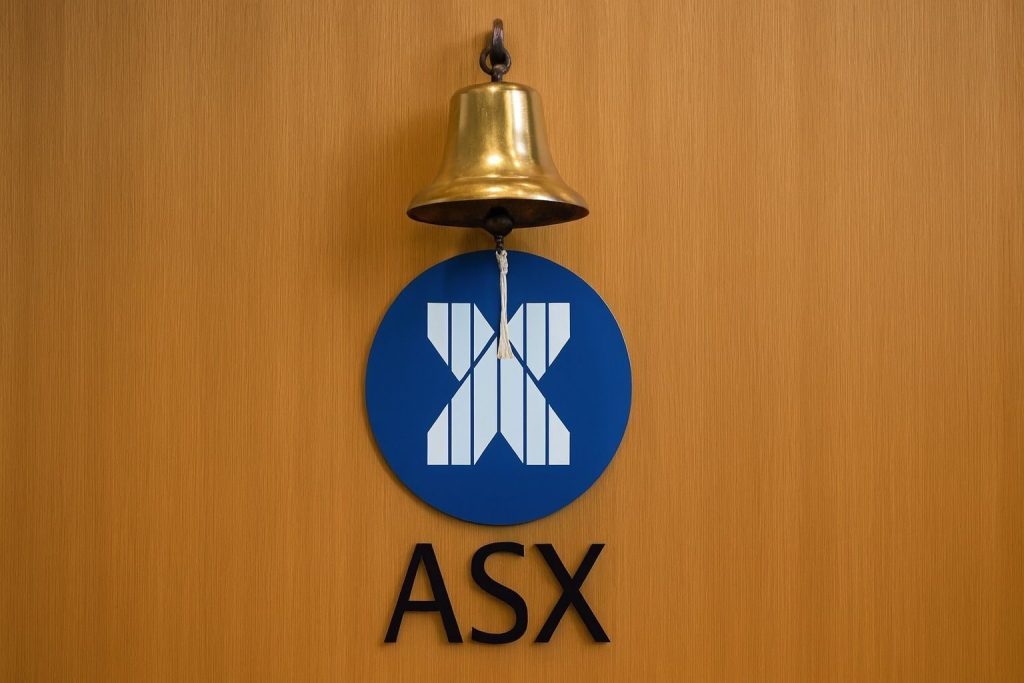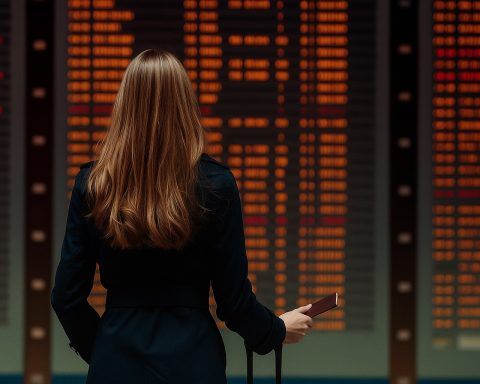Updated: November 25, 2025
A major jet fuel disruption is rippling through Seattle-Tacoma International Airport (SEA) in the middle of one of the busiest Thanksgiving travel weeks on record, after a leak forced BP to shut down its Olympic Pipeline — the main fuel artery for the airport and much of the Pacific Northwest. Airlines are adding refueling stops, trucking in fuel, and warning of possible schedule changes, while the governors of Washington and Oregon have both declared fuel emergencies to keep planes and cars moving. [1]
What happened to BP’s Olympic Pipeline?
The Olympic Pipeline, operated by BP, is a roughly 400-mile system that transports gasoline, diesel and jet fuel from refineries in northern Washington down to terminals in the Seattle area and into Oregon. It normally supplies more than 90% of Oregon’s transportation fuels and is the primary source of jet fuel for SEA. [2]
The current crisis began earlier this month:
- November 11: During routine maintenance east of Everett, crews noticed a fuel sheen in a drainage ditch near Lowell–Snohomish River Road, where two parallel pipes — 16-inch and 20-inch — run underground. [3]
- BP partially shut the line to investigate, briefly restarted one segment, then shut it down again when signs of leakage persisted, halting deliveries of refined products along the system. [4]
Since then, BP says crews have:
- Excavated over 200 feet of pipeline to reach and assess the damaged section. [5]
- Confirmed the leak is in the 20‑inch pipe, while tests show no indication of a leak in the 16‑inch line. [6]
- Begun developing a repair and partial restart plan, though no public restart date has been given yet. [7]
Environmental crews have deployed booms and recovery equipment to contain the released product near Everett while the cause of the leak remains under investigation. [8]
How the fuel shutdown is affecting Seattle-Tacoma International Airport
SEA’s fuel system is designed around steady pipeline deliveries into its fuel farm. With the Olympic Pipeline offline, that flow has abruptly stopped, forcing airlines to get creative.
According to airport officials and airline statements:
- Sea-Tac has not run out of jet fuel, but the normal buffer is tighter and constantly being replenished by trucks and tankering strategies. [9]
- The airport says it is not seeing major systemic disruptions yet, but individual flights — especially long-haul and transcontinental services — are being adjusted. [10]
Local coverage shows what that looks like for passengers on the ground:
- Some Delta customers report that previously nonstop flights from Seattle to cities like Atlanta and Boston are now making extra refueling stops in places such as Salt Lake City or Spokane, adding roughly an hour to total travel time. [11]
- Travelers have received text or app notifications about these changes before arriving at the airport, rather than learning about them at the gate. [12]
A Sea-Tac spokesperson has emphasized that there should not be a scenario where a plane is suddenly unable to depart due to fuel at the last minute; if a flight is going to be delayed or adjusted because of the fuel situation, airlines are expected to alert passengers in advance. [13]
Airline contingency plans: Delta, Alaska and more
Alaska Airlines
Alaska Airlines, SEA’s largest carrier with roughly half the airport’s market share, says it does not expect disruptions to its schedule through the Thanksgiving travel period, thanks to aggressive contingency measures. [14]
Those measures include:
- Tankering fuel on inbound flights — carrying more fuel than usual so aircraft arrive in Seattle with enough onboard to reduce how much they need to take from the airport. [15]
- Expanding trucking operations to haul extra jet fuel into SEA under emergency regulatory waivers. [16]
- Adding fuel stops to around a dozen flights per day, typically on longer routes such as Seattle–New York (JFK) and flights to Hawaii, where aircraft land en route, refuel, and continue without passengers deplaning. [17]
So far, Alaska says it has not canceled flights solely because of fuel supply issues, crediting these workarounds with keeping its operation intact. [18]
Delta Air Lines
Delta, the second-largest carrier at Sea-Tac, is taking a similar approach but is being more explicit about potential schedule changes:
- It has trucked additional jet fuel into Seattle to bolster on-site reserves. [19]
- A small number of domestic long-haul flights departing SEA — such as cross-country services — are now scheduled to make brief refueling stops. [20]
- Delta has issued a flexible travel waiver, allowing affected passengers to adjust their itineraries without penalty if the airline needs to alter the schedule. [21]
The airline has warned customers that international and long-haul routes are most likely to see changes and urges passengers to check flight status frequently. [22]
Other airlines and Portland (PDX)
The Olympic Pipeline also supplies Portland International Airport (PDX), but because PDX is smaller than SEA and has more flexibility in alternative deliveries, aviation analysts say the impact there has so far been less severe. [23]
Several other national carriers serving Seattle have said they are monitoring the situation, coordinating with fuel suppliers, and adjusting tankering plans and truck deliveries as needed, though they have disclosed fewer specifics publicly. [24]
Fuel emergencies in Washington and Oregon
Because the Olympic Pipeline is so critical to the region’s fuel supply, both Washington and Oregon have now activated emergency powers.
Washington
Washington Governor Bob Ferguson issued an emergency proclamation after the leak, focusing on keeping SEA supplied with enough jet fuel to support holiday travel. [25]
His order:
- Temporarily waives state regulations on truck driver hours-of-service for commercial drivers hauling jet fuel to the Port of Seattle and the airport. [26]
- Is designed to ensure that trucks can run longer and more frequently to replace the lost pipeline flow until repairs are complete. [27]
Oregon
On Monday, Oregon Governor Tina Kotek declared a statewide fuel emergency, noting that the Olympic Pipeline provides more than 90% of the state’s fuel and that a prolonged shutdown could threaten both ground and air transportation. [28]
Key points from her order and subsequent briefings:
- The declaration is preventative: officials say Oregon is not yet experiencing physical fuel shortages, but want to stay ahead of any shortfall. [29]
- The order relaxes certain trucking regulations and environmental program requirements to make it easier to bring fuel in via ships and additional truck routes if needed. [30]
- The emergency runs from November 24 through December 24, 2025, unless extended or lifted earlier. [31]
Officials in both states have also warned that while supply is being maintained, fuel prices could tick higher because trucking and shipping fuel is more expensive than using the pipeline. [32]
Are flights being canceled at Sea-Tac?
So far, the picture is more about delays and detours than mass cancellations.
- Sea-Tac says there has been no wave of cancellations directly attributed to the pipeline issue as of late Monday and into Tuesday morning. [33]
- Alaska Airlines reports that it has not canceled flights due to fuel supply, relying instead on tankering and mid-route fuel stops. [34]
- Delta and other carriers have adjusted flight plans for certain long-haul services, sometimes converting nonstop flights into one-stop journeys for refueling, typically adding about an hour to travel time. [35]
Travelers have described missed dinner reservations and tighter connections, but not widespread stranded-passenger scenarios. [36]
What travelers flying through Seattle should do today
If you’re flying into, out of, or through SEA during Thanksgiving week, here’s how to minimize hassle:
- Check your flight status early and often
- Start monitoring your flight at least 24 hours in advance via your airline’s app or website.
- Pay special attention if you’re on long-haul or transcontinental routes — these are most likely to get fuel stops added. [37]
- Watch for new fuel-stop layovers
- A “nonstop” ticket might temporarily become a one-stop flight with a technical refueling stop, where you remain on board while the plane is refueled.
- These stops are typically around an hour but can vary with congestion and weather. [38]
- Build extra buffer into connections
- If connecting in Seattle, consider leaving more time than you normally would, especially for international connections or flights to the East Coast and Hawaii.
- Use change waivers if your airline offers one
- Delta, for example, has issued flexibility for some travelers whose flights may be adjusted because of the fuel situation; check your carrier’s alerts and emails. [39]
- Arrive on time anyway
- Even if a delay looks likely, most airlines still expect passengers to arrive according to original check‑in and boarding times unless you are explicitly rebooked.
- Keep an eye on fuel-related updates
- Both states and BP will continue providing updates on repairs and emergency orders. If the pipeline partially restarts, airlines may gradually unwind fuel stops and truck deliveries. [40]
Is Seattle-Tacoma Airport at risk of running out of fuel?
Short answer: Not imminently, but the system is under unusual stress.
- Emergency declarations in Washington and Oregon are specifically designed to prevent shortages by relaxing rules on trucking and alternative deliveries. [41]
- Airlines are “stretching” fuel supplies by tankering extra fuel into SEA and carefully prioritizing how much they draw from the airport’s tanks. [42]
- Sea-Tac officials say that while they are closely monitoring storage levels, fuel planning is being handled in advance so passengers don’t discover problems at the gate. [43]
The bigger risk is that a prolonged shutdown would force the region to rely on costly and logistically complex alternatives for weeks, which could mean more schedule reshuffling and higher fuel prices, even if outright shortages never occur. [44]
How long could the disruption last?
As of November 25, 2025, no firm restart timeline has been published:
- BP says crews are working “around the clock,” have identified the leak in the 20‑inch segment, and are preparing a repair and partial restart plan. [45]
- Washington and Oregon’s emergency measures are set to run through at least late December, signaling that officials are planning for the possibility that the pipeline won’t be fully back online quickly. [46]
From a traveler’s perspective, that means the contingency playbook — extra fuel stops, tankering, trucking — is likely to remain in place at least through the Thanksgiving period and possibly into the December holidays, unless repair work progresses faster than expected. [47]
Key facts at a glance
- Where is the leak?
East of Everett, Washington, between Everett and Snohomish, in the 20‑inch section of BP’s Olympic Pipeline. [48] - What does the pipeline carry?
Gasoline, diesel and jet fuel from refineries in northern Washington to terminals serving the Seattle area and Oregon. [49] - Which airports are affected?
Primarily Seattle-Tacoma International Airport (SEA) and, to a lesser extent, Portland International Airport (PDX), which also relies heavily on Olympic Pipeline supplies. [50] - Which airlines are most impacted?
SEA’s biggest carriers, Alaska Airlines and Delta Air Lines, are leading the contingency response, including extra fuel stops and trucked-in fuel. [51] - Are flights still operating?
Yes. As of today, no major wave of cancellations has been blamed solely on the fuel issue, though some long-haul flights are now making refueling stops and experiencing delays. [52]
References
1. www.reuters.com, 2. www.reuters.com, 3. www.everettpost.com, 4. www.reuters.com, 5. www.reuters.com, 6. komonews.com, 7. www.reuters.com, 8. www.everettpost.com, 9. www.reuters.com, 10. www.reuters.com, 11. komonews.com, 12. komonews.com, 13. komonews.com, 14. aviationweek.com, 15. aviationweek.com, 16. aviationweek.com, 17. aviationweek.com, 18. aviationweek.com, 19. www.reuters.com, 20. www.foxbusiness.com, 21. www.foxbusiness.com, 22. aviationweek.com, 23. www.travelcodex.com, 24. www.foxbusiness.com, 25. www.everettpost.com, 26. www.everettpost.com, 27. www.everettpost.com, 28. www.reuters.com, 29. abcnews.go.com, 30. abcnews.go.com, 31. ktvz.com, 32. abcnews.go.com, 33. komonews.com, 34. www.reuters.com, 35. komonews.com, 36. komonews.com, 37. aviationweek.com, 38. komonews.com, 39. www.foxbusiness.com, 40. www.reuters.com, 41. www.everettpost.com, 42. aviationweek.com, 43. komonews.com, 44. www.reuters.com, 45. www.reuters.com, 46. ktvz.com, 47. aviationweek.com, 48. www.everettpost.com, 49. www.reuters.com, 50. www.reuters.com, 51. www.reuters.com, 52. komonews.com










